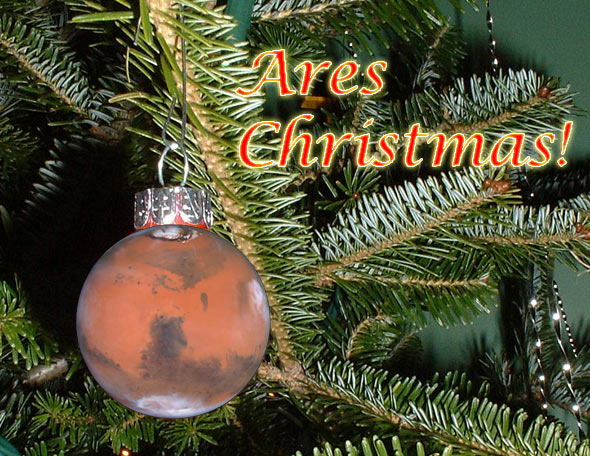Create a free profile to get unlimited access to exclusive videos, sweepstakes, and more!
A Fearful Rendezvous for Mars Express

Ten years ago this ChristmasâDec. 25, 2003âthe European Space Agency probe Mars Express took up orbit around the Red Planet. For the past decade itâs been sending back scads of information about Mars and its moons. Iâve written about it many times (see Related Posts below), and the mosaic of the Martian south pole made using Mars Express images was one of my picks for Best Astronomy Photos of 2013.
On Dec. 29, the probe will make a pretty gutsy move: It will pass just 45 kilometers (27 miles) above the surface of Phobos*, the bigger of the two moons of Mars. Given that Phobos is only about 22 kilometers across, and Mars Express will be zipping along at several kilometers per second, you can see why this is a pretty bold move. Itâs passed by Phobos before, but never this close.
It wonât take any pictures, but will relay data about its precise trajectory as it passes Phobos. The gravity of the tiny moon will cause the probe to deviate a bit in its path, and from that the mass of Phobos can be accurately found. Currently, we donât know the mass exactly, but it appears as if the moon has a very low density, indicating it may be a loosely collected rubble pile, like a giant bag of rocks in space. That can happen if an asteroid or moon suffers repeated low-speed collisions with other space rocks. It shatters in place, like a car windshield when a decent-sized piece of debris hits it.
Iâll write about that once the data are in, analyzed, and reported. In the meantime, here is an extremely cool high-def video of Phobos created using images from Mars Express. Thisâll give you a really good look at this weird little moon:
You can see the very odd collection of linear chains of craters across it; these grooves are not well-understood. Itâs been theorized they are formed from impacts slamming the moon and creating seismic waves, or that they may have been from chains of debris blasted out from Mars when the planet suffered a major impact. Both of these ideas have big problems with them, and itâs really not at all clear what the heck formed these bizarre features.
Even though Mars and its moons are relatively close by to Earth, thereâs a whole lot more we have to learn about them. There are mysteries a-plenty to investigate, and itâs worth our time to look into them. Knowledge is worth it for its own sake, in my not-so-humble opinion, but also itâs simply true that the more we know about the Universe around us, the better we understand our own home world and our place in it.
*âPhobosâ means âfearâ, hence the post title, but itâs also apropos.
Flying Over Mars
Top of Another World to Ya!
Ancient Mars Was a Blast: Scientists Find Evidence of Martian Supervolcanoes
Phobos Passes Jupiter... As Seen from Mars!
More Incredible Phobos Imagery


























